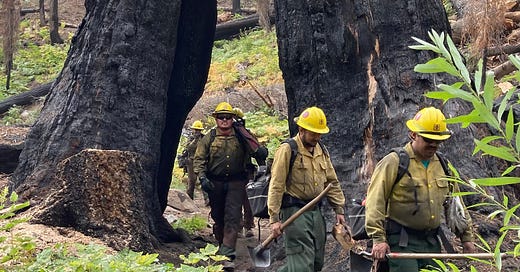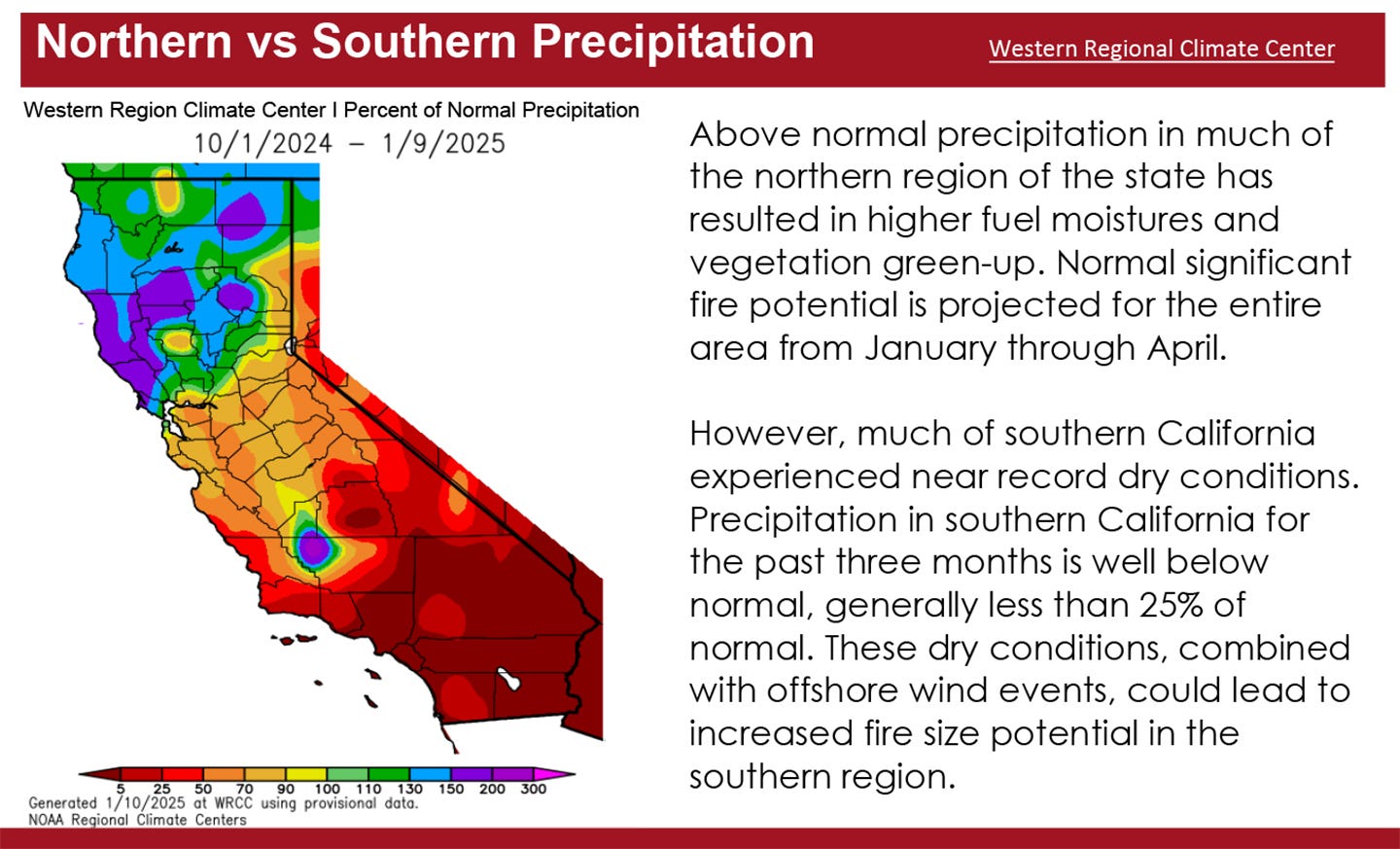Volume 3, Number 44 - Thursday, Jan. 30, 2025
Published every Monday and Thursday

Perspective
THERE HAS BEEN LOTS OF NEWS reported in the last ten days as the Trump Administration hit the ground running. The many executive orders have brought cheers from some and jeers from others. What I have wondered about some of them is how they might impact public lands management and specifically giant sequoia lands.
As The Washington Post HERE (gift link) noted, some of the EOs will have an immediate impact, and others are more rhetorical.
You may know that the order on Monday to temporarily pause agency grants, loans and other financial assistance projects was later rescinded. At least for now.
But the federal hiring freeze is still in place, and earlier this week federal employees were sent an email offering them a chance to resign with pay through Sept. 30.
With 47% of the land in California and most giant sequoia lands, under federal jurisdiction, it is federal employees — sometimes using contractors — who are in charge of managing that land.
Last October, I checked in with Sequoia National Forest to find out the status of work related to the 2022 Giant Sequoia Emergency Response. As reported HERE, there were still thousands of vegetation piles to burn and no money to pay for the work.
I’ve asked SQF, the Giant Sequoia Lands Coalition and Save The Redwoods League about the impact of the Trump Administration’s actions on giant sequoias, especially the hiring freeze, and the effort to reduce federal employees with fire season right around the corner.
I hope to have their responses in time to include them in Monday’s newsletter.
In the meantime, like others, I’m watching the news and wondering what the Trump Administration’s actions will mean for public lands.
Forest Service Chief Randy Moore postponed a planned all-employee call on Monday, as reported HERE. Here’s an excerpt from his statement:
As we work to implement Office of Personnel Management and USDA guidance for new executive orders, the Executive Leadership Team and I have decided to postpone tomorrow’s Chief’s all-employee call until USDA and USDA Natural Resources and Environment leadership are in place and we have more answers to your questions. Thank you to those of you who submitted questions to me online. From them, I see that the administration transition is understandably what you are most curious about or, specifically, the details of executive orders.
Please continue to be patient as we find answers to your questions. We will receive further guidance from the Office of Personnel Management and USDA in the coming days and weeks.
The Hotshot Wake Up is another Substack newsletter that I follow, and its coverage HERE of the federal resignation offer includes speculation that agencies may be moved around and that the Trump Administration might pull public lands wildfire management all into one separate agency.
You may know that the Forest Service is part of the United States Department of Agriculture, and other agencies, including the National Park Service, Bureau of Land Management and Bureau of Indian Affairs, are part of the Department of Interior.
Could agencies be created, moved or consolidated by executive order? I don’t know. But I can imagine the mess it might create if such major changes weren’t well planned.
Media reports have tied some of the EOs to Project 2025, a collection of conservative policy suggestions.
An article by Forest Service Employees for Environmental Ethics published last August said:
The 920-page manifesto lays out a plan “to address and reform the failings of big government and an undemocratic administrative state.” What does this mean for public lands?
According to FSEEE (HERE), Project 2025 did not say much about the Forest Service, but what it said was critical:
Driving the need for reform is the complaint that “Wildfires have become a primary vegetation management regime for national forests and grasslands.” Wildfires, by definition, are uncontrolled, yet wildfire is somehow being managed by the Forest Service? The solution is for the Forest Service to “focus on proactive management … that does not depend heavily on burning.”
Project 2025 also addresses the Department of Interior (HERE) and calls for reforms to the National Environmental Police Act. Here’s a brief excerpt:
Congress never intended for the National Environmental Policy Act to grow into the tree-killing, project-dooming, decade-spanning monstrosity that it has become.
There is lots of speculation, and a couple of facts concern me. Among them, the federal government is operating under a continuing resolution that expires on March 14, meaning we may be only six weeks away from a potential government shutdown. And, the Southern Sierra is too dry, with fire season just months away.
Some other news
Sierra National Forest reported on Facebook earlier this week that it planned to resume prescribed burning on the High Sierra Ranger District and would begin igniting large machine piles on the Bass Lake Ranger District.
Cicely Muldoon, superintendent of Yosemite National Park, announced she will retire next month, as reported HERE by SF Gate yesterday.
The USGS highlighted some recent efforts in its latest Firelight newsletter, including a project that will provide published science syntheses that are tailored for use by wildland fire managers in developing wildland fire management plans, NEPA analyses, and other required compliance documents for fire and fuels management HERE.
Wildfire, water & weather update
We’ve had some welcome snow and rain, and more is coming to Northern California. However, forecasts don’t show a lot of precipitation reaching the southern Sierra Nevada. The area is still “abnormally dry,” according to the California Drought Map (HERE), and more areas of the state have advanced into various stages of drought.
Did you know you can comment here?
It’s easy to comment on items in this newsletter. Just scroll down, and you’ll find a comment box. You’re invited to join the conversation!
Thanks for reading!





Claudia, I appreciate your attention to what new executive orders and other plans might do to management of our public plans. It seems to me you are being very evenhanded in searching out answers from various agencies. Thank you. Elli Norris, formally of Springville.